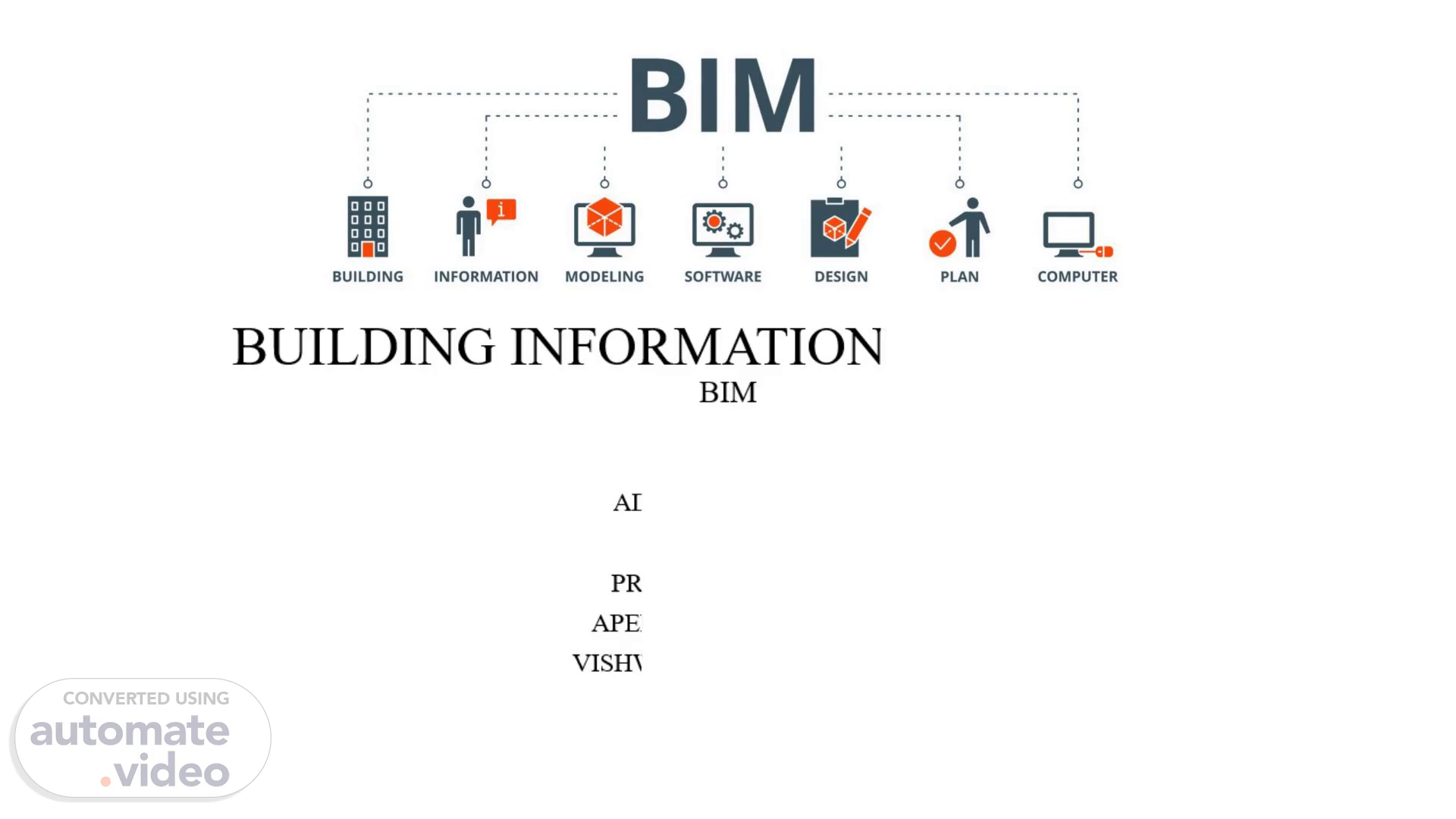
BUILDING INFORMATION MODELLING BIM
Scene 1 (0s)
BUILDING INFORMATION MODELLING BIM. ADVANCE THEORY PRESENTATION BY- APEKSHA SHEDGE (33) VISHWAJEET MOHITE (23).
Scene 2 (25s)
[Audio] Building Information Modelling (BIM) is a digital process that assists with planning, designing, constructing and managing information related to buildings and infrastructure projects throughout their life cycle. It involves working with a three-dimensional, intelligent model that provides professionals, such as architects, engineers, contractors and other stakeholders engaged in the design, construction and functioning of a facility, with insights and tools to help them do their job more effectively. BIM is a digital approach spanning from planning to design to construction to maintenance, and in every stage from design and construction to the ongoing operation of the facility..
Scene 3 (1m 5s)
[Audio] Interoperability and model federation are the cornerstones of the BIM concept. Interoperability enables information exchange between different vendors, and model federation combines data from different sources to form an integrated and shared model. Additionally, homeostasis - the human body's ability to balance its inner environment - helps its adaptability to various environmental conditions..
Scene 4 (1m 58s)
[Audio] A diagram of a construction project is shown on this fourth slide. This is an example of Building Information Modelling (BIM) which is a system that coordinates the planning, design, construction and management of a project. BIM is an effective tool which makes the project more efficient and decreases the cost of construction. Moreover, through BIM, the whole project lifecycle can be planned, visualized, analyzed and simulated before the construction is even started. It is evident that the use of BIM is crucial for any successful construction project..
Scene 5 (2m 37s)
[Audio] Building Information Modelling, or BIM, is a powerful tool that can bring clarity to any construction project. It helps boost agility by allowing potential risks to be identified before they become an issue that cause costly setbacks. Customers have access to accurate information with BIM, allowing them to make well-informed decisions faster. Furthermore, BIM presents a digital prototyping system for architects and engineers to detect problems and ensure quality before construction commences. All in all, BIM is an essential tool for any construction project..
Scene 6 (3m 16s)
This is CAD Task Schematic Design developmen Constructio documents Checking and coordinatio' CAD (hours) 190 436 1023 175 This is BIM BIM (hours) 90 220 815 16 Hours saved 100 216 208 159 Time savings 53% cAdlVs BIM BIM.
Scene 7 (3m 23s)
[Audio] BIM (Building Information Modelling) provides a range of benefits to contractors, owners, architects, civil engineers, interior designers, electrical engineers, construction managers, and mechanical engineers. It allows them to create a digital representation of a building structure swiftly and accurately. This digital model gives all stakeholders a shared view of the building, so they can work together, detect potential problems and plan for effective and cost-efficient construction. Furthermore, BIM makes it easier to evaluate the building performance during construction and to plan for future renovations and extensions. Plus, BIM helps reduce waste and simplifies project delivery, leading to more efficient and cost-effective outcomes..
Scene 8 (4m 12s)
[Audio] Slide 8 of the presentation tackles Building Information Modelling and Sustainable Design. BIM technologies offer the opportunity to assess the repercussions of design decisions in a matter of seconds. It further facilitates the integration of various design approaches, which is a big move in the direction of creating green projects. BIM models can also supply product makers with additional information, thus reducing and even eliminating waste. Design teams can simulate multiple scenarios and evaluate possible solutions that will yield better energy efficiency, take advantage of natural light and ventilation, evaluate the suitability of solar panel installation and much more..
Scene 9 (4m 57s)
[Audio] I'm here to talk to you about building information modelling, or BIM. BIM allows smoother communication and team collaboration, as it allows for seamless integration across all parts of the project. It also helps with cost evaluations and tracking changes, as well as providing clear 3D imagery for clients. Coordination between the different teams is also improved, which minimizes risks and costs, and helps with order and timeline. These elements combine to reduce time and money, and help deliver effective projects. I have presented to you the key benefits of BIM, and thank you for your attention..